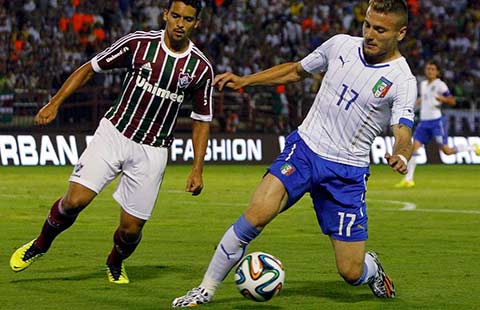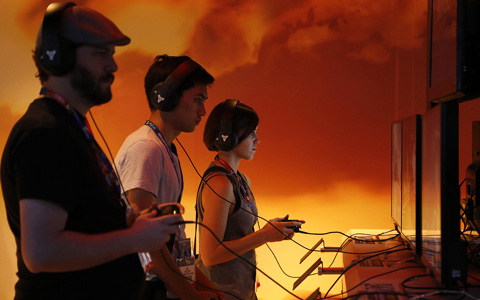Palace Museum on outreach drive
Updated: 2014-06-06 08:14
By Sun Yuanqing (China Daily Europe)
|
|||||||||||
Very few people have had the luxury of riding a bicycle inside Beijing's Palace Museum. Claude Faubert is one of them. The director-general of the Canada Science and Technology Museum, based in Ottawa, is also a coordinator for international training at the Palace Museum.
Faubert had no idea how staff members of the Palace Museum got around in a palace that big. The problem was solved soon after he arrived in November.
"They gave me a bike and said 'come with us'. It was great. I felt very special indeed," says Faubert.
Authorities at the Palace Museum are trying to reach out to a wider global audience after succeeding at home. They are offering exchange programs to museum professionals through the International Council of Museums, the non-governmental network of museums and museum professionals headquartered in Paris.
"After 10 years, we have students from all over the world and the exchange of information is so much easier," says Shan Jixiang, director of the Palace Museum.
Set up last year as a joint project between the Palace Museum and the ICOM, the training center at the Palace Museum offers two workshops to 30 participants every year. Half of the students are from China and the other half are selected internationally by ICOM.
People from the Asia-Pacific region, Africa, Latin America and Europe have taken part in the workshops, where lecturers from China, Japan, Europe and South Africa have taught.
The first set of workshops was held last November for 10 days with a focus on museum management, and the second, on the topic of collection, was in April this year.
Terry Simioti Nyambe, assistant curator of ichthyology at the Livingstone Museum in Zambia, was the first person from Africa to participate in the program.
Nyambe says he is amazed by how well China has looked after its heritage.
"I had an opportunity to widen my professional network of colleagues in the museum world. With this widened network, I can consult with (people) in different fields of museum management. I have also acquired more knowledge of activities such as strategic planing or building partnerships."
Faubert has witnessed how officials at the Palace Museum have grown more adept at organizing the workshops.
"People from the museum are gaining great experience putting on this kind of international workshop," he says.
Aside from the exchange programs, the museum is seeking closer collaboration with international organizations to better conserve its cultural relics.
It has collaborated with the World Monuments Fund, the New York-based nonprofit organization dedicated to preserving the world's most treasured places, to restore the ancient architecture in the museum since 2001. It took nearly a decade to renovate the Juanqin Studio, a private retreat of Qianlong, an emperor from the Qing Dynasty (1644-1911).
Palace Museum officials are now talking to the American Alliance of Museums about the prospect of holding joint programs focused on Chinese museums. In the past, the museum's administration has been in touch with top US, European and Asian museums and palaces, such as the Metropolitan Museum of Art, the Virginia Museum of Fine Arts and the Peabody Essex Museum, the Versailles, the Kremlin Palace and the Louvre Palace, for exhibitions .
In October, the Palace Museum will hold an exhibition of its relics at the Virginia Museum of Fine Arts in Richmond.
sunyuanqing@chinadaily.com.cn
(China Daily European Weekly 06/06/2014 page19)
Today's Top News
China finds way to play in 2014 World Cup
Protocol targets sex violence
Premier all business on Europe trip
Poland-China train on maiden trip
Iraq facing 'mortal threat' from militants
China, Italy boost ties
Brazil averts strike before WCup
Red meat 'linked to cancer'
Hot Topics
Lunar probe , China growth forecasts, Emission rules get tougher, China seen through 'colored lens', International board,
Editor's Picks

|

|

|

|

|

|





